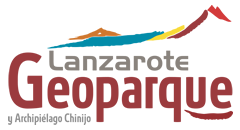Project Description
Montaña Clara is a large building, approximately 1400×1500 m and 256 m high, with a broad crater open towards the north, of around 700m in diameter. The building is eroded by the sea, and on the cliffs we can observe the genetic evolution that began by being hydromagmatic and ended up with its construction, with some magmatic eruptive phases. The surtseyan sequence includes a complex sequence of surtseyan pyroclastic waves, laminated layers with accretional lapilli and prints and structures and impact bombs. The magmatic phase is characterised by the emission of lava that only surfaces on craters and in Roque del Oeste. At the back of the building, there are feeding dykes of the volcanic system surfacing, that visually stand out because of their intense black shade in contrast with the yellow shade of the palagonite materials that form the building.
Main features of interest of the geosite are related to volcanology, and the secondary interest is stratigraphic. This is a very well preserved building where marine erosion allows us to observe the transition from underwater to subaerial vulcanism. The contrast of colour and harshness of the hydromagmatic deposits, and the lava and dykes, influence the visual impact spectacularly.

